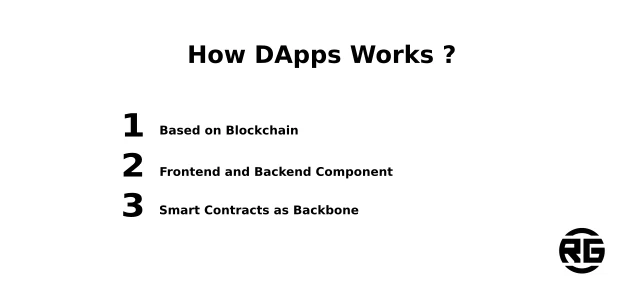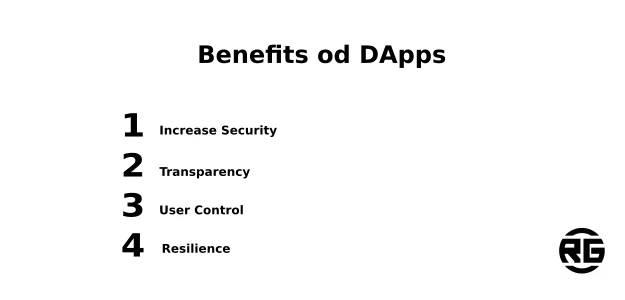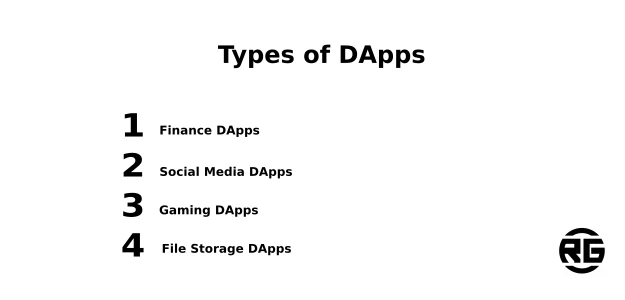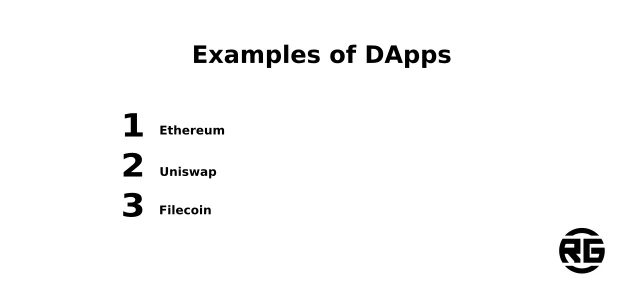Introduction
Are you tired of the limitations of traditional apps? Do you want to explore a new world of technology that allows for greater security, transparency, and user control? Look no further than decentralized apps, or dapps.
Dapps are a relatively new concept in the digital world, but they are quickly gaining popularity for their innovative approach to app development. Unlike traditional apps that use a centralized server. Decentralized network is design for Dapps.
It means single entity or organization not controlling it. This provides a host of benefits, including increased security, transparency, and user control.
In this article, we’ll provide an introduction to the world of dapps, exploring what they are, how they work, and why they matter. So buckle up and get ready to dive into the exciting world of decentralized apps!
What are Decentralized Apps?
Decentralized apps, or Dapps, are applications that are core of a decentralized network such as blockchain. So to say, Dapps are all along across a network of computers, making them more secure, transparent, and resilient. Also, Dapps are open source, meaning that anyone can view and contribute to their code. This allows for greater collaboration and innovation in the development process.
Dapps are transparent and trustless, meaning that users can trust that the app will function as intended without the need for intermediaries. Dapps are also immutable. That meaning once new node join the network, then … they cannot be altered or taken down by any single entity. This provides a level of security and reliability that traditional apps cannot match.
Decentralized apps can serve a variety of purposes, from finance and gaming to social media and file storage. The possibilities for dapp development are endless, and as the technology continues to evolve, we can expect to see even more innovative use cases emerge.
How Do Decentralized Apps Work?
Decentralized apps are built on a decentralized network such as blockchain, which is a distributed ledger that records transactions across a network of computers. Each computer in the network maintains a copy of the blockchain. Updating is in real-time as new transactions are comming.
Dapps are typically two main components: a front-end interface that users interacting with, and a back-end. Back-end that runs on the decentralized network. The front-end can be traditional web development tools such as HTML, CSS, and JavaScript. While the back-end is using smart contracts, which are self-executing programs that enforce the rules of the dapp.
Smart contracts are the backbone of decentralized apps, providing the logic and rules that govern how the app functions. Smart contracts are deployed on the blockchain, and once deployed, they cannot be altered or deleted. This ensures that the rules of the dapp are transparent, immutable, and trustless.

Decentralized applications are designed to support smart contracts as their main function, indeed.
Benefits of Decentralized Apps
Decentralized apps offer a number of benefits over traditional apps, including:
Increased Security
Because dapps are on a decentralized network, they are more secure than traditional apps. Traditional apps rely on a centralized server, which can be vulnerable to hacking and other security threats. Dapps, on the other hand, are across a network of computers, making them less vulnerable to attacks.
Transparency
Obviously, Dapps are designed to be transparent, meaning that anyone can view and audit their code. So, this providing a level of transparency that traditional apps cannot match, as their code is often close-source and proprietary.
User Control
Dapps are designed to be trustless, meaning that users can trust that the app will function as intended without the need for intermediaries. This gives users greater control over their data and transactions, as they are not reliant on third parties to facilitate transactions.
Resilience
Because dapps are distributed across a network of computers, they are more resilient than traditional apps. If one node in the network goes down, the app can still function because there are other nodes in the network that can pick up the slack.

Obviously, there are a few benefits of using Decentralized Applications.
Decentralized Apps vs Traditional Apps
Decentralized apps offer a number of advantages over traditional apps, but they also have some limitations. Here are a few key differences between the two:
Centralized vs Decentralized Control
Traditional apps are typically controlled by a central authority, such as a company or government. This gives the central authority a great deal of control over the app and its users. Dapps, on the other hand, are built on a decentralized network, meaning that they are not controlled by any single entity.
Security
Because traditional apps rely on a centralized server, they are more vulnerable to security threats such as hacking and data breaches. Dapps, on the other hand, are distributed across a network of computers, making them more secure and resilient.
Scalability
One of the challenges facing dapps is scalability. Because dapps are built on a decentralized network, they can be slower and less scalable than traditional apps. However, new technologies such as sharding and state channels are being developed to address this issue.
Types of Decentralized Apps
Decentralized apps has a few different types.
Finance Dapps
Finance dapps are designed to facilitate financial transactions, such as payments, loans, and investments. Examples of finance dapps include MakerDAO, Compound, and Uniswap.
Gaming Dapps
Gaming dapps are designed to enable online gaming experiences. Examples of gaming dapps include Axie Infinity, CryptoKitties, and Decentraland.
Social Media Dapps
Social media dapps are designed to provide decentralized alternatives to traditional social media platforms such as Facebook and Twitter. Examples of social media dapps include Steemit, Minds, and Mastodon.
File Storage Dapps
File storage dapps are designed to provide decentralized alternatives to traditional file storage services such as Dropbox and Google Drive. Examples of file storage dapps include Filecoin, Storj, and IPFS.

Especially, Decentralized Application are used in file storage, social media, financial and gaming industry, as well.
Examples of Popular Decentralized Apps
There are a number of popular decentralized apps that are gaining traction in the digital world. Here are a few examples:
Ethereum
It is a decentralized platform that enables the development of dapps using smart contracts. Ethereum is one of the most popular platforms for dapp development, with a wide range of use cases including finance, gaming, and social media.
Uniswap
Decentralized exchange, Uniswap allows users to trade cryptocurrencies without the need for intermediaries. Uniswap uses an automated market maker system to facilitate trades, making it a popular choice for decentralized trading.
Visit Uniswap
Filecoin
Decentralized storage network that allows users to store and retrieve files using a distributed system of nodes – Filecoin. Filecoin is more secure, efficient, and affordable than traditional file storage services.

Without a doubt, the best examples of DApps in cryptocurrency world are Ethereum, Uniswap and Filecoin.
How to Build a Decentralized App
Building a decentralized app can be a complex process. In consequence, there are a number of resources available to developers starting adventure. Here are a few steps to follow:
Choose a Platform
The first step in building a dapp is to choose a platform to build on. Ethereum is one of the most popular platforms for dapp development, but there are other options available as well.
Write Smart Contracts
Once you’ve chosen a platform, the next step is to write smart contracts that will govern the rules of your dapp. Smart contracts are written in programming languages such as Solidity, and they are deployed on the blockchain.
Develop a Front-end Interface
The next step is to develop a front-end interface that users will interact with. This can be done using traditional web development tools such as HTML, CSS, and JavaScript.
Test and Deploy
Once your dapp is built, the next step is to test it to ensure that it works as intended. Once you’re satisfied with the functionality of your dapp, you can deploy it on the platform of your choice.

Indeed, by creating decentralized applications, you become part of the cryptocurrency community.
Challenges and Limitations of Decentralized Apps
While decentralized apps offer a number of advantages over traditional apps, they also have some limitations and challenges. Some of the key challenges include:
Scalability
One of the biggest challenges facing dapps is scalability. Because dapps are built on a decentralized network, they can be slower and less scalable than traditional apps. However, new technologies such as sharding and state channels are being developed to address this issue.
User Adoption
Another challenge facing dapps is user adoption. Because dapps are still relatively new, they can be difficult for users to understand and navigate. However, as more user-friendly interfaces are developed, we can expect to see greater adoption of dapps.
Regulatory Challenges
Because dapps are decentralized and trustless, they can be difficult to regulate. This has led to some regulatory challenges, particularly in the area of finance dapps. However, as the technology continues to evolve, we can expect to see more clarity around regulatory issues.
Future of Decentralized Apps
The future of decentralized apps is bright. As the technology continues to evolve and improve, we can expect to see even more innovative use cases emerge. Decentralized apps have the potential to revolutionize a wide range of industries, from finance and gaming to social media and file storage. While there are still some challenges to overcome, the benefits of decentralized apps are undeniable.
Conclusion
Decentralized apps are a new and exciting development in the world of technology. They offer a host of benefits over traditional apps, including increased security, transparency, and user control. While there are still some challenges to overcome, the future of decentralized apps is bright. As the technology continues to evolve, we can expect to see even more innovative use cases emerge. So if you’re looking for a new and exciting way to develop apps, look no further than decentralized apps!

Leave a Reply
You must be logged in to post a comment.